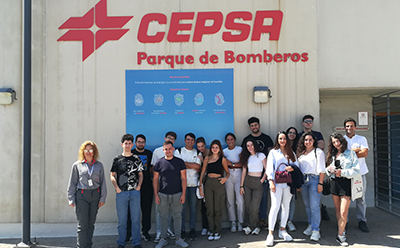- The educational initiative Energy Campus exceeds 3,400 students
- Cepsa's annual visitor program is part of its commitment to transparency and responsibility towards the environment
The company states that with these initiatives, framed within its open door policy, transparency exercise, and responsibility, it educates society on the energy sector, knowledge about the transition, and its 2030 Positive Motion strategy, also including environmental preservation and conservation actions. Through its strategy, Cepsa is becoming a benchmark in the energy transition, leading sustainable mobility in Spain and Portugal, as well as the production of green hydrogen and second-generation advanced biofuels to drive decarbonization for its customers and its own activity.
Of note is the Energy Campus program, through which 1,444 students visited the San Roque Energy Park, with the figure reaching 2,381 students at the Huelva facilities, where they learned everything related to energy generation and consumption, as well as best practices in efficiency, environmental protection, and safety. A total of 3,825 students from secondary and baccalaureate education, and vocational training are now more informed about the energy sector and the importance of Cepsa as a driving force at the international level from Andalusia.
Cepsa also highlights the celebration of World Wetlands Day, an activity whereby, during the month of February, 362 elementary school students from Campo de Gibraltar got to see the Madrevieja Environmental Station and 547 from Huelva visited Laguna Primera de Palos, actively participating in various environmental education workshops.
The general visits are aimed at associations, institutions, universities, and citizens who want to learn closely about how an energy park works, its processes, products, and applications in daily life, as well as Cepsa's energy transition project and its involvement in safety, the environment, and its social commitment to its surroundings. As a complement to the industrial facility visit, the archaeological site of Carteia or the Madrevieja Environmental Station (both located in San Roque) can be visited; and in the case of Huelva, the Laguna Primera de Palos lagoon can be visited.




